Math 232: Linear Algebra Winter 2014
|
Math 232: Linear Algebra Winter 2014 |
|
Prof. Rafe Jones
MW 11:10-12:20, F 12:00-1:00 in CMC 206
Textbook: Linear Algebra with applications, fifth edition, by Otto Bretscher |
This one wins for best overall artistry, and also largest number of math jokes:
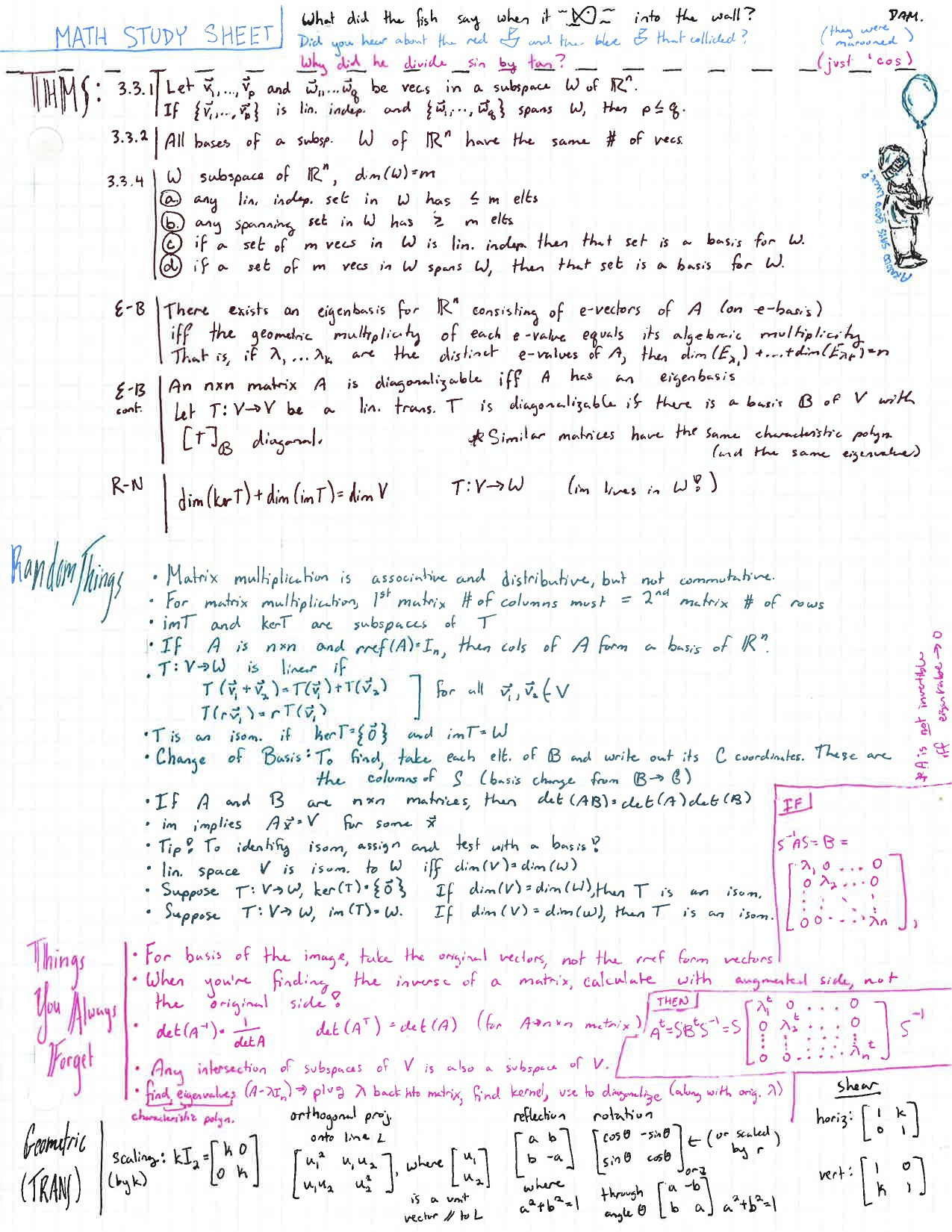
This one wins the prize for most occurrences of a linear-algebra-loving animated character:
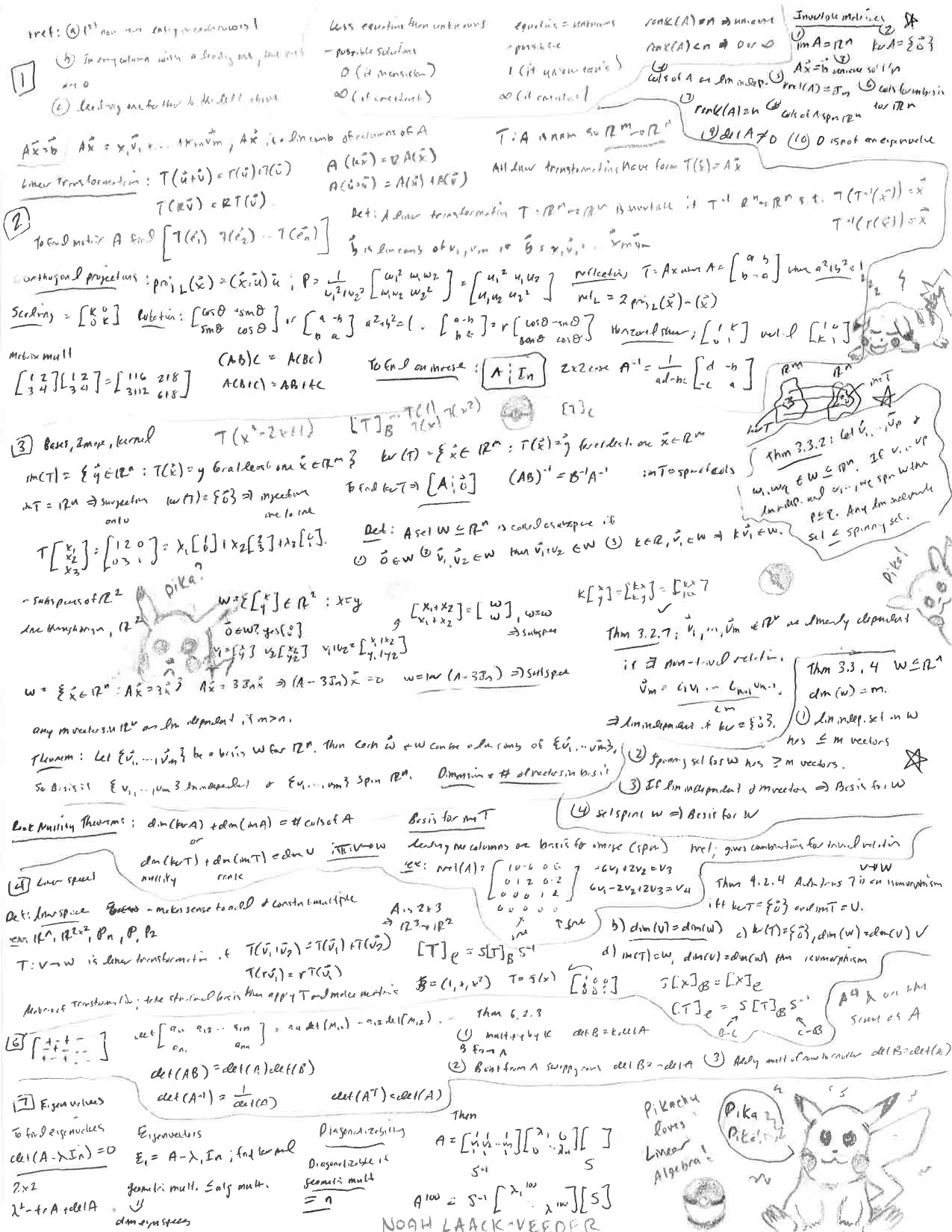
This one gets an award for the best homemade comic character:
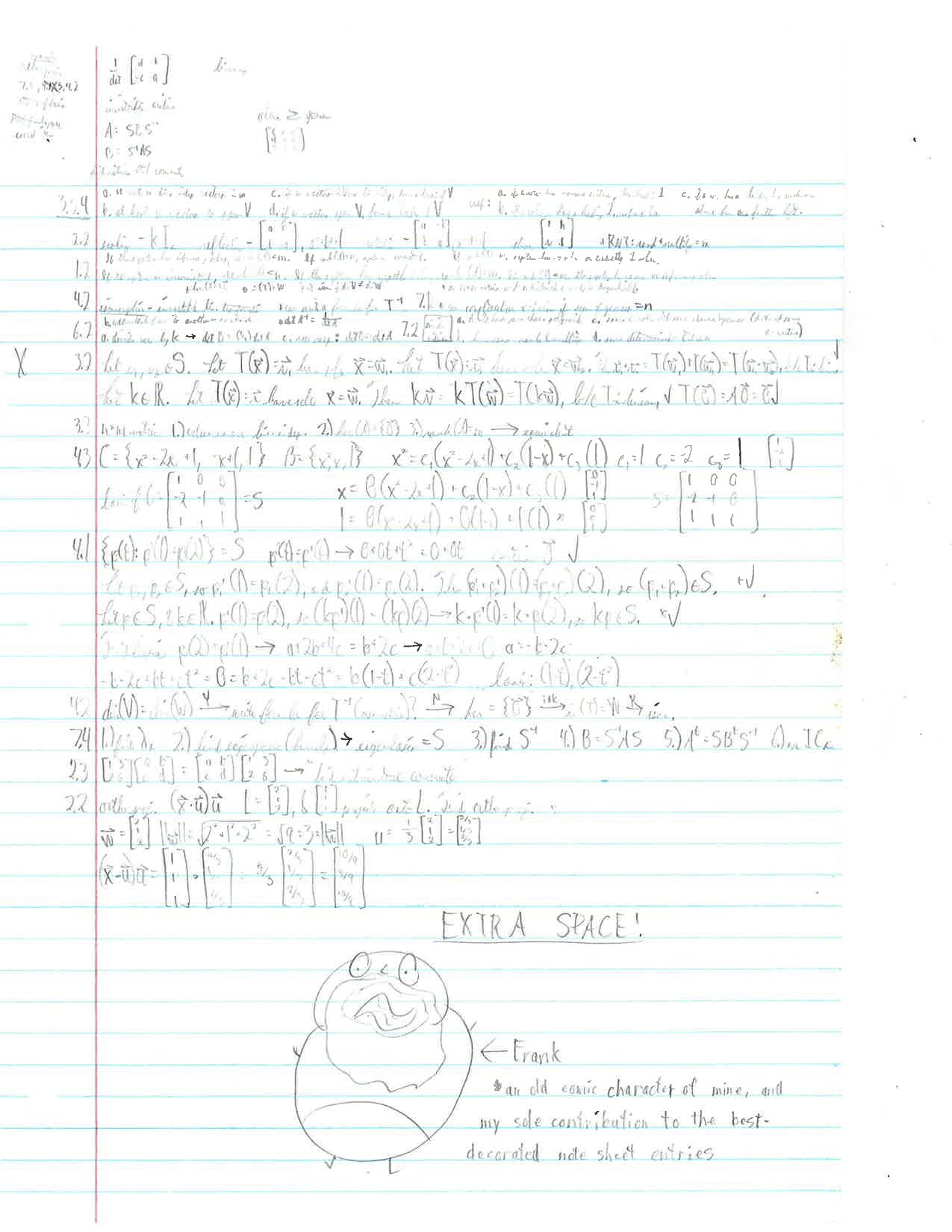
This one gets the trophy for most prominent display of Everyone's Favorite Matrix:
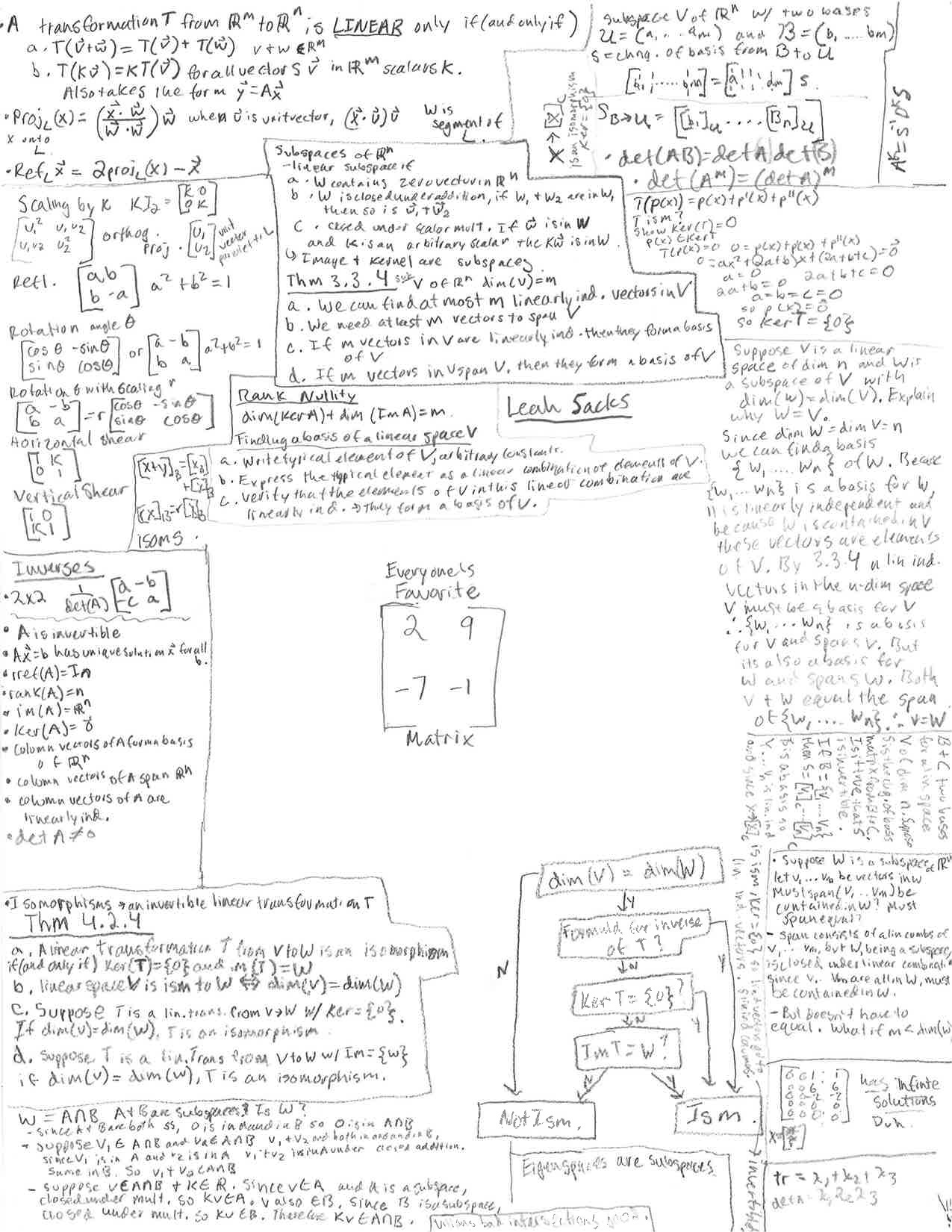
This one has the most matrix-like dividers:
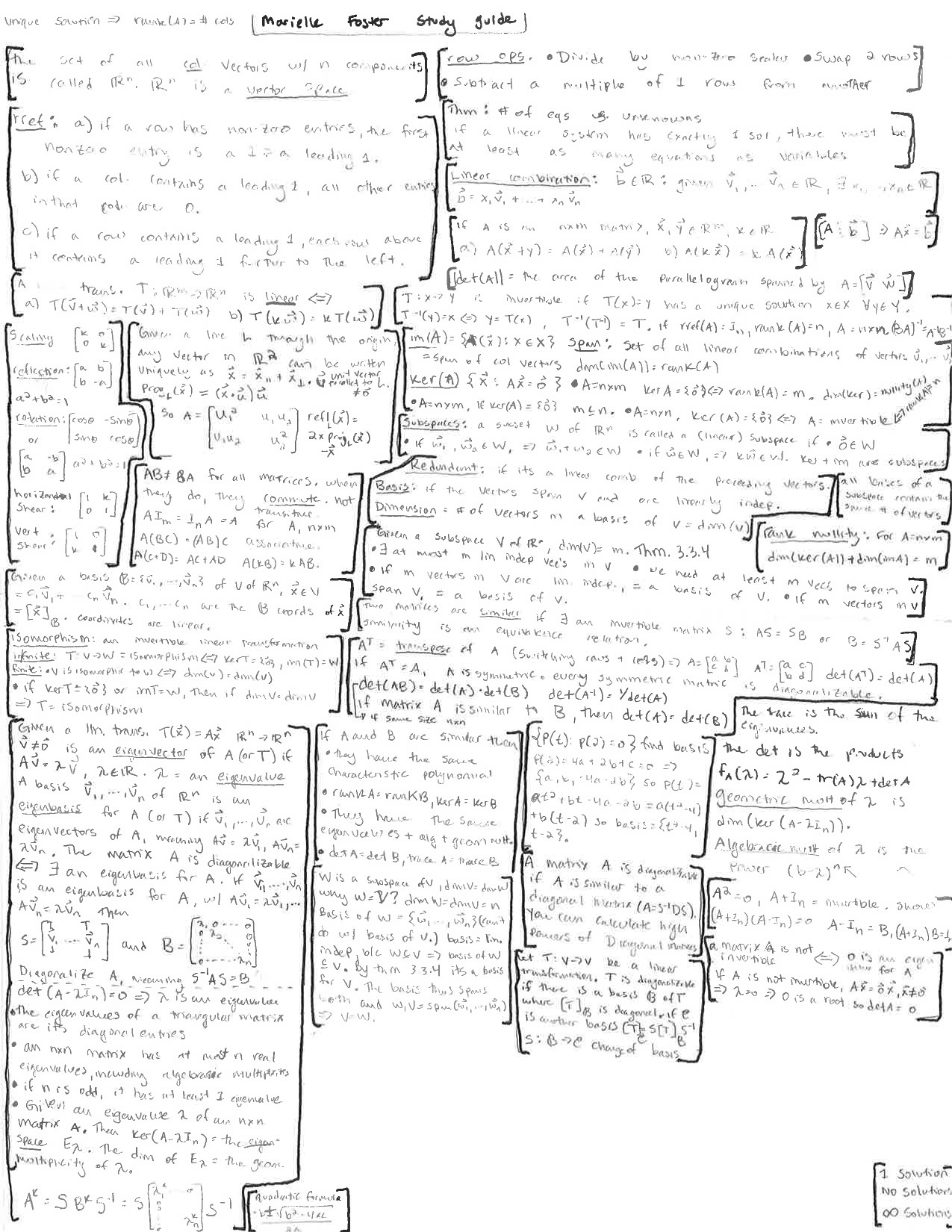
And this one has the coolest overall pattern of mathematical regions:
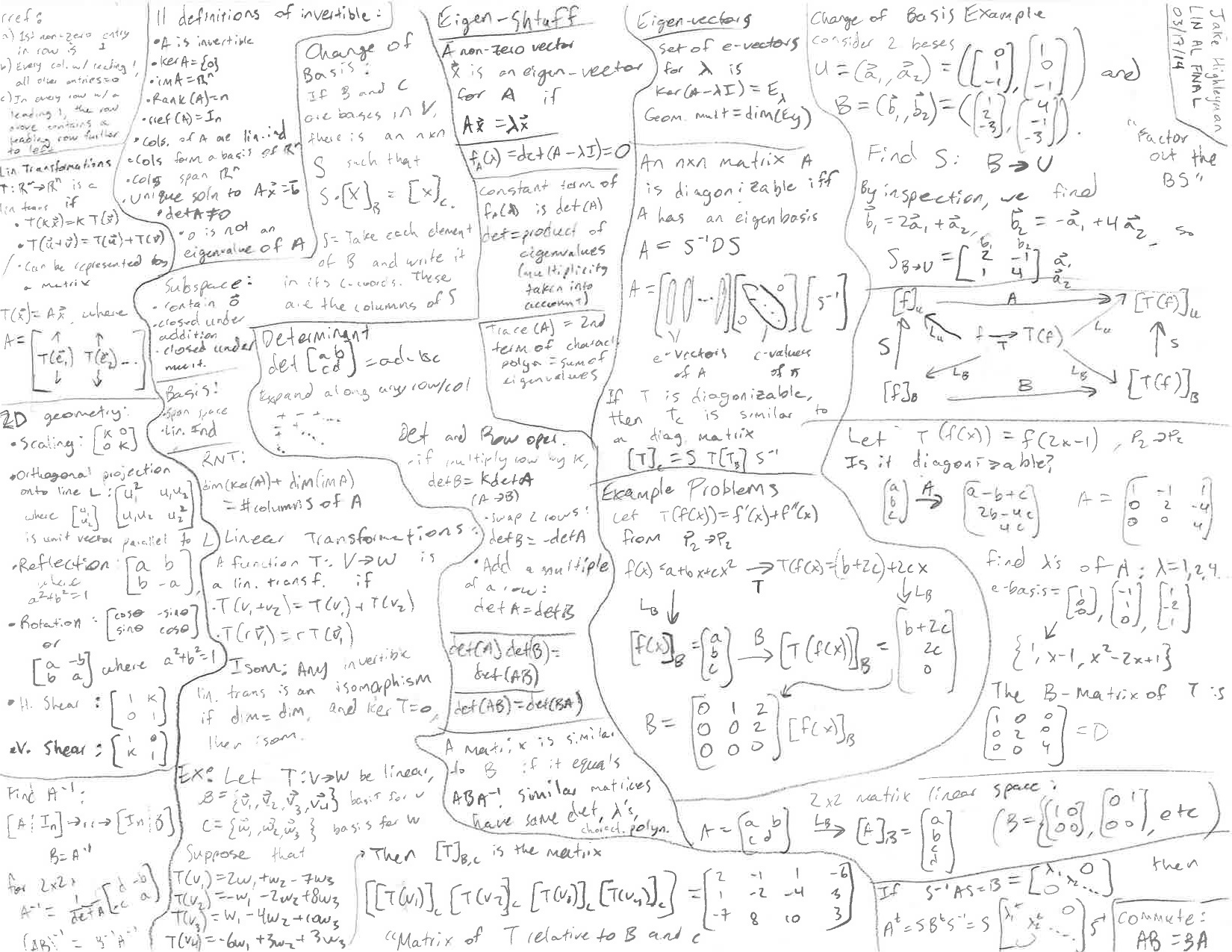
Office hours this week: Friday 12:30-2:00 (review session in CMC 206), and Saturday 12:30-1:30.
The final will be approximately twice as long as the midterms, though you'll have 2.5 hours in which to do it. It will cover everything we've done in the class. The material since the second midterm (the parts of sections 6.2, 7.1, 7.2, 7.3, and 7.4 that we covered in class) will account for roughly one-third of the exam.
Note Sheet: You will be allowed to have one side of one 8.5 by 11 sheet of notes for the exam. All sheets must be handwritten. You can write anything you like on the sheet -- formulas, examples, mnemonics, your personal linear algebra mantra, etc. No magnifying devices allowed. For those who would like to decorate their sheets or otherwise artistically arrange them: I will post my favorite ones on the course website after the exam.
Review tips:
Review Problems:
Project I
Project II
Paper that goes with Project II
The second midterm is Monday, March 3, in class. It will cover Sections 3.2, 3.3, 4.1, 4.2, 4.3, and basic properties of determinants.
The exam will consist of a few computation problems, 1-2 proof-based problems, and a few true-false questions with explanation (some of these are likely to be identical to some of the review problems below). You'll have the full 70 minutes of class on Monday to complete the exam. To review for the exam, try to simulate the exam environment: take the practice exam below without looking at your notes, and using only 70 minutes. Try to do the true/false questions also without looking at your notes, and as efficiently as possible (write out a sentence or two explaining your answer for each). You could break them into sets of five, and give yourself 20 minutes to do each set. If you recognize areas where you aren't sure of yourself, then go back and consult your notes, book, and old homework in order to solidify your knowledge.
Some review problems:
Chapter 3 Exercises (pp. 163-165) #1-7, 10, 16, 17, 19, 29, 38, 50.
Chapter 4 Exercises (pp. 199-201) #5, 6, 8-11, 14, 15, 17, 18, 19, 24, 27, 28, 30, 31, 34, 37, 43-45, 51, 53, 55, 56, 64.
Section 6.1, 3, 5, 7, 11, 13, 31, 33, 39.
The above (except for the problems from 6.1) are all true-false questions. However, they're not necessarily easy! For each problem, you should write down some justification for your answer; for some of them just a sentence will do, while for others you'll need to do a computation or make an argument. The low-numbered exercises tend to be straightforward, while the higher-numbered ones can be quite challenging.
For a practice midterm, click here. For solutions to the practice midterm, click here.
The first midterm is Friday, February 1, in class. It will cover Chapters 1 and 2, and Sections 3.1 and 3.2. You should know all the definitions and techniques necessary to do the homework problems.
The exam will consist of 5-7 problems, each of which is similar in format to one of the homework exercises or one of the review problems below. You'll have the full 70 minutes of class on Wednesday to complete the exam. Good ways to review for the exam include working the review problems below, reworking any homework problems that you lost points on or feel you didn't fully understand, and reviewing your class notes.
Below are quite a lot of review problems. They are True/False, but they're not necessarily easy! For each problem, you should write down some justification for your answer; for some of them just a sentence will do, while for others you'll need to do a computation or make an argument. For instance for #4 from Chapter 1, if you think the answer is false, then you should jot down a system of four equations in three unknowns that is consistent. You should be able to move quickly through the first ones from each chapter, but some of the later ones will require significant thought.
Chapter 1 Exercises (pp. 38-40) #1-27, 31-35, 37, 39, 41-43.
Chapter 2 Exercises (pp. 107-109) #1-11, 15, 18, 19, 21, 23, 27, 30, 34, 35, 36, 40, 43, 47, 53, 49, 50, 53, 57.
Chapter 3 Exercises (pp. 163-165) #6, 7, 9, 13, 14, 18, 20, 22, 25, 27, 29, 37, 41.
For a practice midterm, click here.
For solutions to all the true-false questions at the end of each chapter, click here.
For solutions to the practice midterm, click here.
Welcome to the class!
| EXAMS |
Midterm Exam 2: Monday, March 3, in class Final Exam: Monday, March 17, 8:30-11:00am
|